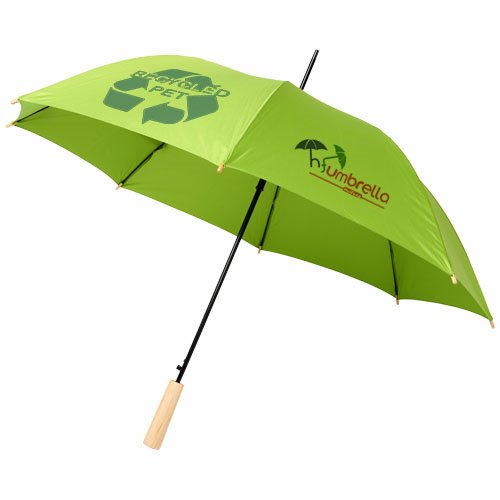Customized umbrellas are essential appliances that are needed by each person! Whether it serves to protect your skin from the scorching sun, keeping you dry from the pouring rain, or having your favorite pattern compliment the fantastic view of the beach. Most are unfamiliar with the small design choices that can make each umbrella suited to their specific needs. Features such as the handle, the material of the fabric, or even its longevity are often overlooked when it comes to purchasing an everyday umbrella. As a result, the average person usually owns an umbrella that couldn’t last longer than a week! Hence, the following tips could make a significant difference when choosing the right umbrella for you:
Table of Contents
Umbrellas that Block UV Radiation
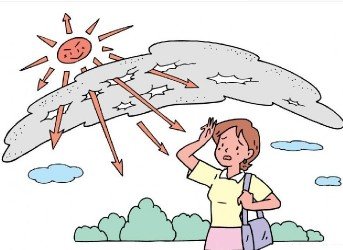
It is important to ask yourself the fundamental question, “How will I use my umbrella?”. Some use an umbrella on a rainy day to get to work, and some to protect their skin from the sun at the beach. The best type of umbrella for every person heavily depends on the climate in which you live or where you plan to travel. Keep in mind that there are key differences between umbrellas that resist the sun and those that resist water! Everything You Need to Know About UV Umbrellas
Umbrellas that resist the sun allow for high UV protection, which is indicated through the Ultraviolet Protection Factor (UPF). This rating allows customers to assess how well the umbrella protects them from UV radiation. Prolonged exposure to UV rays is harmful as it could lead to skin cancer, aging skin, painful sunburns, or even damage to the eyes.
Common fabrics offer between UPF 30 to 49 rating, which still provides considerable protection for UV rays. However, it is highly advisable to choose umbrella canopies that have a UPF 50 rating, which indicates that it is able to block at least 98% of the harmful radiation! Although it is important to bathe in the sun for some Vitamin D, make sure to bring along an umbrella with at least UPF 50 to avoid any unwanted side effects.
Furthermore, umbrellas could be further customized for protection against UV rays by having an assortment of darker or more vivid colors, as they have greater absorption of UV light.
Umbrellas that are Resistant to Rain and Wind
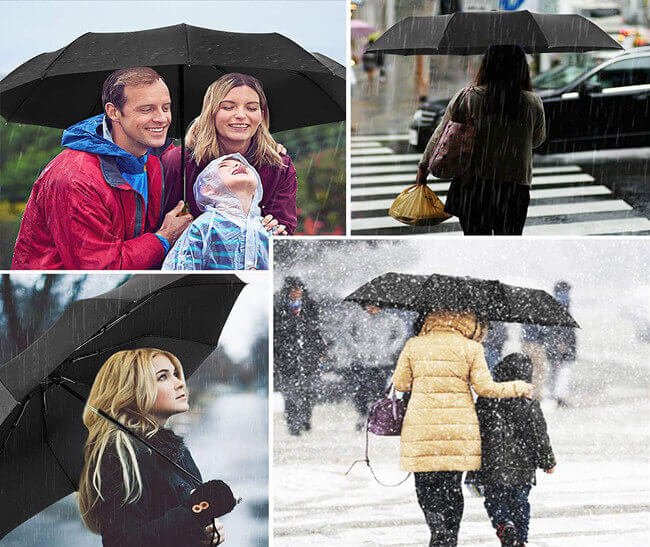
On the other hand, you may live in a country that is pouring with rain and strong gales, which is why it is important for umbrellas to be water-resistant. Inverted umbrellas (also known as upside-down umbrellas) are particularly useful for draining excess water once you have escaped the rain. This type of umbrella opens the frame in its opposite direction, which makes it convenient and compact to bring into a building or car. Additional waterproof sprays can also be used to coat the umbrella to protect its metal components from the rain, stains from the surrounding dirt and fading due to the sun. It is advisable to apply a new layer of waterproof spray every other season to ensure that the umbrella lasts even longer.
Robust umbrellas are particularly advantageous against stormy days. Therefore, it would be best to go for umbrellas with a stronger metal framework with a greater number of ribs. Furthermore, they are usually made of fibreglass skeleton and aluminum handle which gives the umbrella greater flexibility. In addition, storm umbrellas are much thicker than normal umbrellas as they have double canopies on the top and bottom layers. The bottom canopy was specially designed to have vents that prevent the accumulation of wind pressure by allowing them to pass through microscopic holes. This makes the umbrella sturdier as it is less likely to break or escape your hands with the wind. However, these storm umbrellas are significantly heavier than sun umbrellas and can be difficult to carry around. Buying Guide To Custom Windproof Umbrellas
Hence, it is important to customize the materials that will be used and apply the appropriate designs that will balance the weight and durability of the umbrella. An umbrella that is too heavy would outweigh the benefit of its durability and vice versa.
Compact Umbrellas
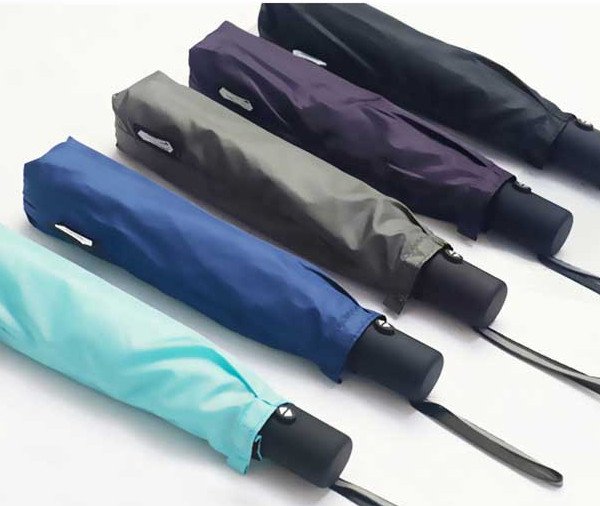
Many umbrellas are large and especially difficult to carry around. Most people would carry their bulky umbrellas outside and return home without using them if there was no rain. Therefore, compact umbrellas are the perfect option as they are lightweight and can be placed comfortably inside your bag. Because of this, it is easy to carry and does not hinder your day-to-day travels. This umbrella helps people endure light showers, offers slight protection from the sun, and is suitable for all ages.
However, due to the compact nature of this umbrella, it lacks the durability of larger ones. Their canopies are often made of lightweight fabric and the framework is often weak in exchange for their flexibility. Because of this, the frames of a compact umbrella can be easily broken by a normal gust of wind and is impossible to use in harsh weather. Furthermore, due to its small size, it lacks a considerable amount of coverage and will not be able to accommodate more than one individual.
Finally, the most common grievance of the compact umbrella is being unable to put it back in your bag once it has been soaked. Because of this, it is recommended to purchase a compact umbrella that is made of Teflon, which allows users to shake off some of the water. If your compact umbrella is not made of Teflon, Teflon-coated umbrellas are also a great alternative.
Although compact umbrellas are not for everyone, they are highly recommended for individuals who are busy workers, particularly those that are traveling to work and back. This is also fantastic for overseas travelers who have to fit the umbrella in their luggage. This provides them with some insurance just in case the clouds start to rain, given that the weather isn’t too extreme.
Type of Handle
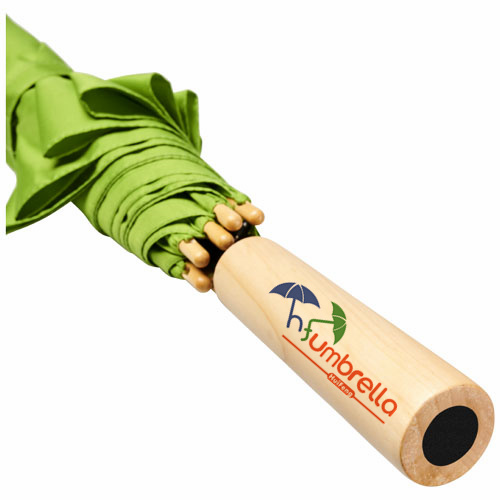
How an umbrella is held is a major factor that influences the user’s comfort. The material of an umbrella may vary from plastic, wooden, bamboo, aluminum to rubber handles. The best material is mostly according to preference, and it would be best to have a feel on which one you like best. Keep in mind that wooden and bamboo handles are often the best options as they provide a sturdy feel and are often coated with a shiny finish. However, aluminum handles may give your hands a chill on colder days. Furthermore, plastic handles may feel cheap to touch and rubber handles may have unwanted friction. Although wood and bamboo handles are often the most popular choice, it is also possible to chip them.
The handle can be customized to have a crooked shape, which allows you to have a firm grip and also acts as an anchor to your hand. The end of the handle can also be rounded, which makes the umbrella more compact, albeit more difficult to hold. Another option is to have a straight handle, which makes it easy to store but simultaneously provides a firm grip. The aforementioned inverted umbrellas are usually complemented with a C-handle, which allows the user to hang the umbrella by their hands when it is inverted. But at the end of the day, the best handle is the one that you prefer the most!
The fabric of the Canopy
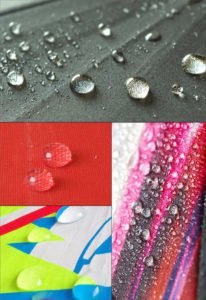
The canopy of an umbrella can be made of a variety of materials such as polyester, pongee, canvas, nylon or microfibres. Out of these options, pongee fabrics offer significant UV protection from the sun and are resistant to changing temperatures and weather. This makes them last longer than most fabrics and suitable for harsher weather.
Similarly, nylon fabric also offers sufficient UV protection and is sturdy despite being virtually weightless. Furthermore, they also prevent exposure to moisture to prevent the frame from oxidizing. Nylon is also a popular material used in umbrellas as they are elastic, resistant to abrasion, staining and are easy to clean. However, they fade in the sunlight and can shine too brightly at certain angles.
Polyester is another commonly used fabric that also blocks UV radiation. Although polyester fabrics are cheaper and more common amongst commercial umbrellas, they are not water-resistant which inevitably makes the framework of the umbrella exposed to moisture and rust. This would require the additional application of anti-corrosion sprays to extend the life of the framework. In addition, it is highly likely for polyester and nylon fabric to accumulate charge with this material. This may trigger an unpleasant static shock when it comes in touch with your skin. To resolve this issue, many manufacturers found that adding cotton reduces the accumulation of static electricity in polyester fabrics.
Other options include canvas fabric, which is made of cotton and also incredibly sturdy. However, blending canvas with other synthetic fibers makes it incredibly heavy, flexible and waterproof, which makes them more suitable for stationary beach patio umbrellas rather than handheld ones. The ABCs of Umbrella Fabrics
Plastic (PVC) can also be used, as it can provide a transparent and unobstructed view of your surroundings, especially for those who use bubble umbrellas. It is very affordable and waterproof, but unable to resist higher temperatures due to intense UV radiation. Therefore, it is much better for rainy days rather than hot summer ones. Since it is plastic, it is also likely that it could get stuck on other material, causing it to fold up easily. Furthermore, it is also prone to tearing and not environmentally friendly when disposed of.
Out of these options, it is highly recommended to use pongee fabric as it is the most tightly woven as it uses thinner threads which creates a canopy with higher density. As a result, this makes pongee more durable, waterproof and resistant to rust and mold. The second-best alternative is nylon, as it is also considerably tightly woven and more flexible than the other options. However, similar to polyester and plastic materials, nylon is not an environmentally-friendly option as it could not be recycled, which is why this is an important consideration for individuals who are environmentally conscious.
Automatic or Manual Opening and Closing
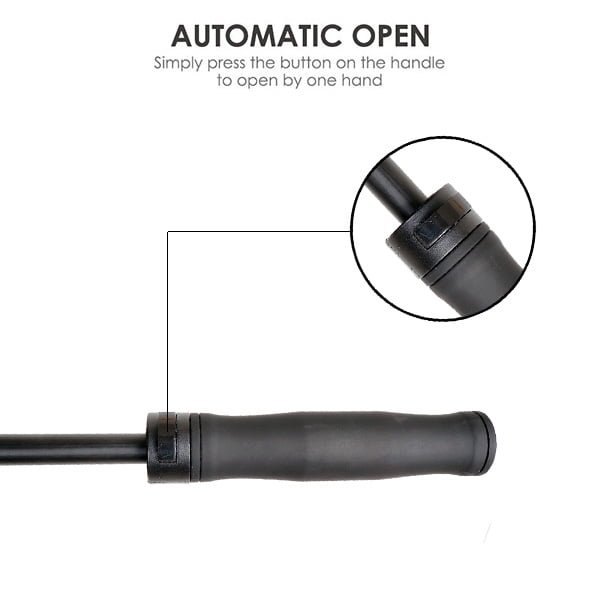
Umbrellas usually have automatic or manual buttons that keep the umbrella opened or closed. An automatic umbrella enables the holder to quickly open the umbrella at the press of a button, which many would find more convenient than manual umbrellas. Pushing the same button would also close the canopy, which relaxes the frame of the umbrella so that it can be folded back. This is also a great option for children, who may find opening umbrellas a difficult task. However, the downside to the automatic mechanism is that it can be easily broken. When this occurs, it is almost impossible to fix and the user may not be able to open the umbrella anymore.
In contrast, the manual umbrella requires one hand to hold the handle in place, and the other hand to press on the bottom spring and extend the umbrella forward and latch it in place. This can be quite a hassle and can make it especially difficult for children and smaller individuals who could not fully extend the umbrella and latch it. However, they do not break as easily, are guaranteed to be longer-lasting and also cheaper relative to automatic umbrellas.
Taking these two mechanisms into consideration, an automatic umbrella would still be favorable given that the umbrella is handled with care. It is important to keep in mind that the button should not be handled roughly to prevent it from breaking. Otherwise, the manual umbrella gives a great amount of security to individuals who want to guarantee that their umbrella will last a long time.
Umbrella Designs

The design of an umbrella will always add cheer to your day, regardless of its other features. Custom umbrellas allow for endless opportunities for images, slogans, patterns, and color schemes to be added according to your preference. In addition to their protective features, umbrellas are also used as colourful accessories in outdoor restaurants, hotels, and beaches. Most importantly, personalized designs are meaningful gifts to those that you care for. Adding a unique touch to an umbrella that they can use would mean a great deal for someone’s special day.
It is also possible to print personal designs that you have made in your own time onto umbrellas! When doing so, it is important to correctly size the image and provide one with a high resolution as the image will be enlarged to cover the size of the canopy. This can be done by using a high-definition camera and focusing on the image to be taken.
If you would like to have a customized design, it is recommended to choose a polyester fabric for the umbrella’s canopy as its colours are especially vibrant. Regardless of the design, you wish to go for, this material allows the colours of the fabric to be more vibrant and does not fade against the bad weather. However, this would be at the expense of some durability.
Material of the Shaft and Ribs

The material of an umbrella’s shaft holds the handle and the framework of the canopy together and keeps the umbrella upright. Furthermore, the framework of the canopy is composed of 6 to 8 ribs connected to the shaft that spreads the fabric when the umbrellas have been opened.
The three materials that are often used for the ribs are most commonly steel, aluminum, or fiberglass. Umbrellas made of steel are strong and more affordable, however, they are more prone to oxidation which leads to rust if it is not given additional anti-corrosion coating. On the other hand, aluminum makes the umbrella lightweight and resistant to rust. However, it is definitely not as strong as steel but will last much longer given that it is not broken. Last, of all, fiberglass is the most expensive option as it is strong, lightweight, and resistant to rust. Other materials such as rubber, graphite, or EVA are usually less desirable due to their appearance and lack of sturdiness in comparison to the aforementioned materials.
Hence, fiberglass is the most desirable option for those who want to customize durable and long-lasting umbrellas. In addition, fiberglass is also wind-resistant which prevents the umbrella from breaking when strong winds flip up their canopies. However, either steel or aluminum can be used as alternatives to remain within a certain budget. Another possible option is to add an additional cost for the anti-rust coating to steel umbrellas.
Similarly, the shaft of an umbrella could also be made from steel, aluminum, and fiberglass. However, wood is also commonly used to complement the wooden handle of the umbrella. To most users, wood is the most aesthetically pleasing material, especially when polished appropriately. Although they are relatively strong, they can be broken if considerable force is applied to them.
Umbrellas for Children
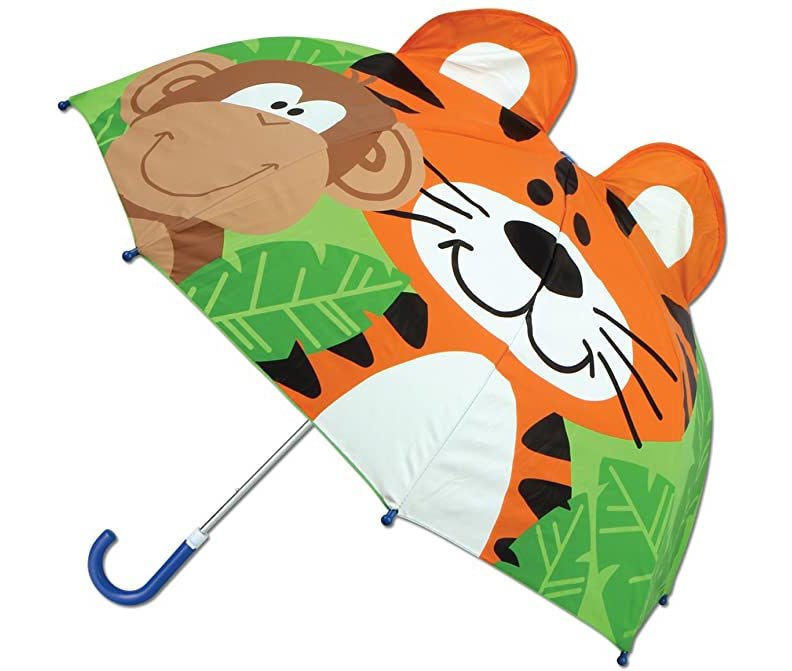
In addition to having customizable designs for the children to enjoy, it is also just as important to choose features that would prevent them from harm. Oftentimes, the tip of the umbrella’s ribs can accidentally pierce people nearby pedestrians, which would be even more dangerous with young children. Therefore, children’s umbrellas are designed to have rounded and flat safety tips to prevent said harm. In addition, these tips are also made of plastic instead of other metals. It is also important that kids do not use umbrellas that are too big for them. This makes it more difficult for them to carry and obstruct their view which can be dangerous when outside. Automatic umbrellas should also be preferred so that they can easily open and close the umbrella.
Furthermore, children are often fond of transparent bubble umbrellas as they can be decorated with a myriad of designs while being aware of their surroundings. This canopy shape also prevents them from catching a cold if they are caught in the rain. Furthermore, plastic is the most common material used as it is incredibly lightweight and allows children to hold them up with ease. The umbrella can also be customized by adding a name tag, which gives it a personal touch when they take the umbrella to school.
Considerations for Larger Umbrellas
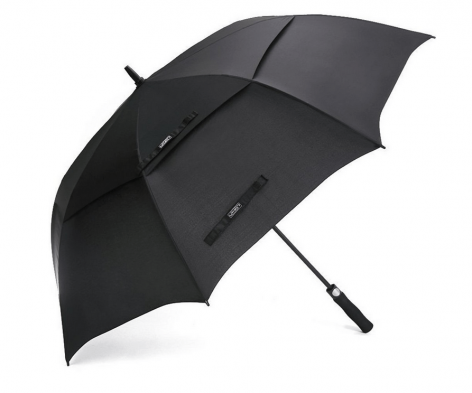
Compact umbrellas are very common amongst most people when it comes to portability and their lightweight nature. In addition to this small umbrella, larger ones such as golf umbrellas are often used to accommodate customers in the outdoors. Their shaft is normally held in place by a table from which customers can eat and drink from. Furthermore, their canopies are considerably wide and tightly woven to provide adequate shade and stand firmly against the wind. It is recommended to use these larger umbrellas when individuals plan to organize outdoor events to accommodate a greater number of people such as weddings or movie nights.
In these cases, the durability of the umbrellas is given the most priority. Therefore, canvas fabrics are often used as they are heavy and helps to anchor down the table from the surrounding environment. For larger umbrellas, it is also crucial to determine the appropriate size of the canopy. This is because the shaft and framework have to be able to support the weight of the larger fabric. However, this also makes them less flexible than the average umbrella and will take much more effort to put into place as well as to take them down.
There is a myriad of considerations that can be taken into account when it comes to choosing the perfect umbrella. Whether you are a parent choosing a safe umbrella for your child, a businessman who wants to promote his or her company, or just planning for a movie night at the beach with your mates. Everyone has their own preferences which can be accommodated by an equally wide range of umbrellas that can be customized to suit everyone’s needs. With this in mind, consider contacting us today as we would be more than happy to create the perfect customized umbrella for you!
There were 10 Tips for Designing Fully Customized Umbrellas. Thank you for reading!

